
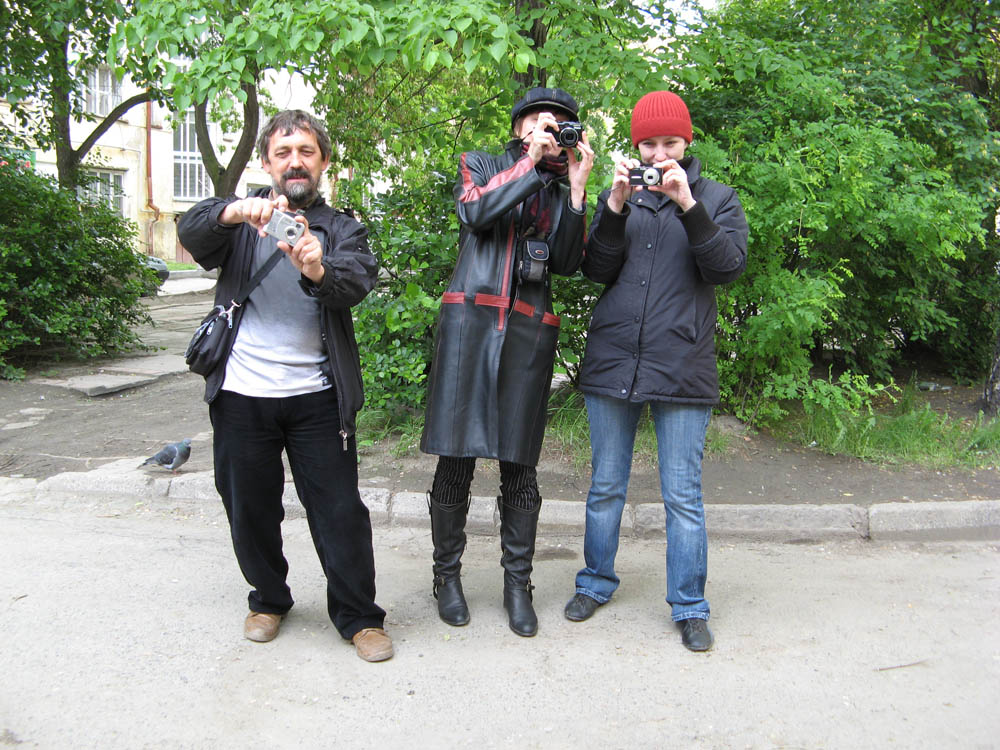
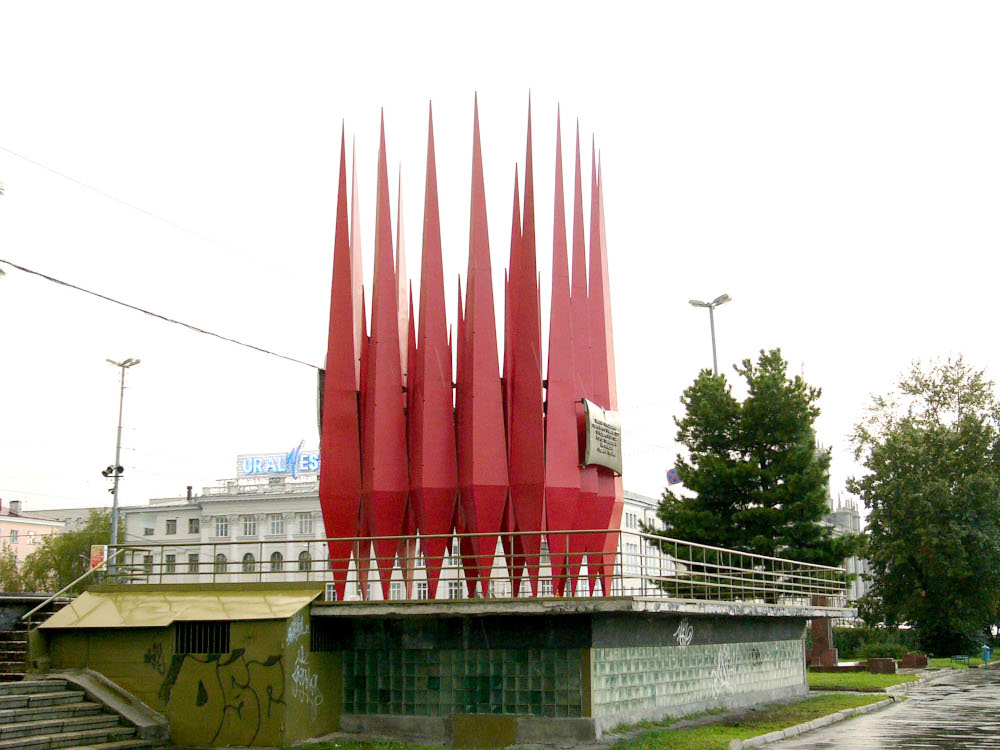
Published in “Yugra / Real Estate” Magazine, Issue 3, May 2008
Section: Architectural Impressions. Personal Dimension
By Marina Razheva and Dmitry Razhev
Photography by the authors
This early publication captures one of our first joint reflections on space, presence, and the surreal logic of landscapes. The article, though significantly edited and abridged by the publisher, offers a glimpse into the layered perception of place that would later evolve into our method of Betweenness. Cappadocia’s dreamlike terrain, full of voids, traces, and transformations prompted a personal and poetic response that blurred the lines between architecture, memory, and myth. This was one of our first attempts to “write from inside the landscape,” sensing the echoes beneath the surface.




THE ANGLE OF VIEW or Fence becomes stairs
Readymade object, 120×70, wood, metal.
2002
A fence stops you. A stair invites you to move. One denies passage, the other makes it possible.
But if you rotate the fence 90 degrees, it becomes a staircase.
The opposites turn into each other if you change your point of view.
Exhibited at:
– Festival of contemporary art «Crossing borders» 2024. Beka 9, Hrpelje-Kozina, Slovenia
– International exhibition “Eurasian syndrome” 2002, Museum of Fine Arts, Yekaterinburg, Russia
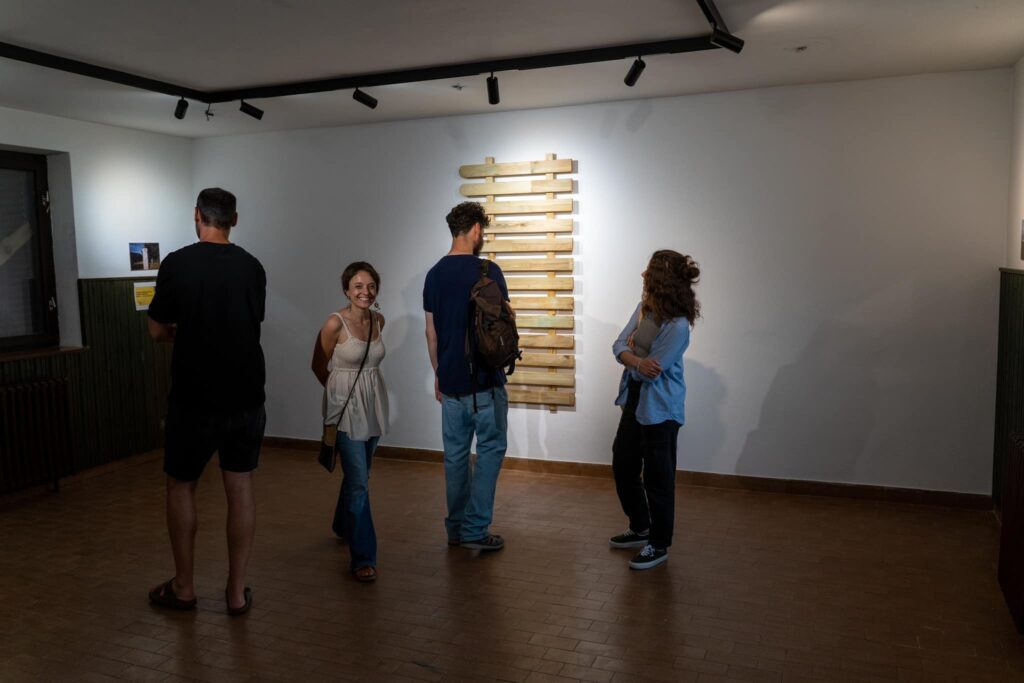
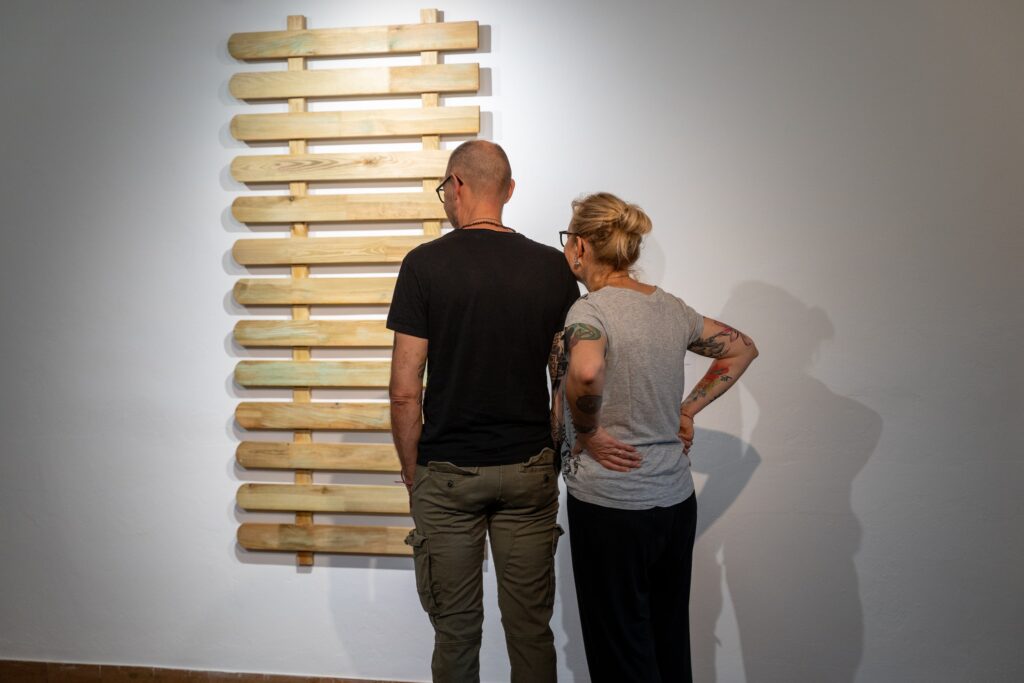
______________
Author note: “The Angle of View” is a story about how meaning changes when you simply turn an object. It’s the same object, but the way we look at it changes everything. Sometimes we see only obstacles. But what if we looked differently?
I made this object in 2002 and then came back to it in 2024. The world around has changed, but this idea is still relevant. It’s about how our boundaries are not always what they seem.

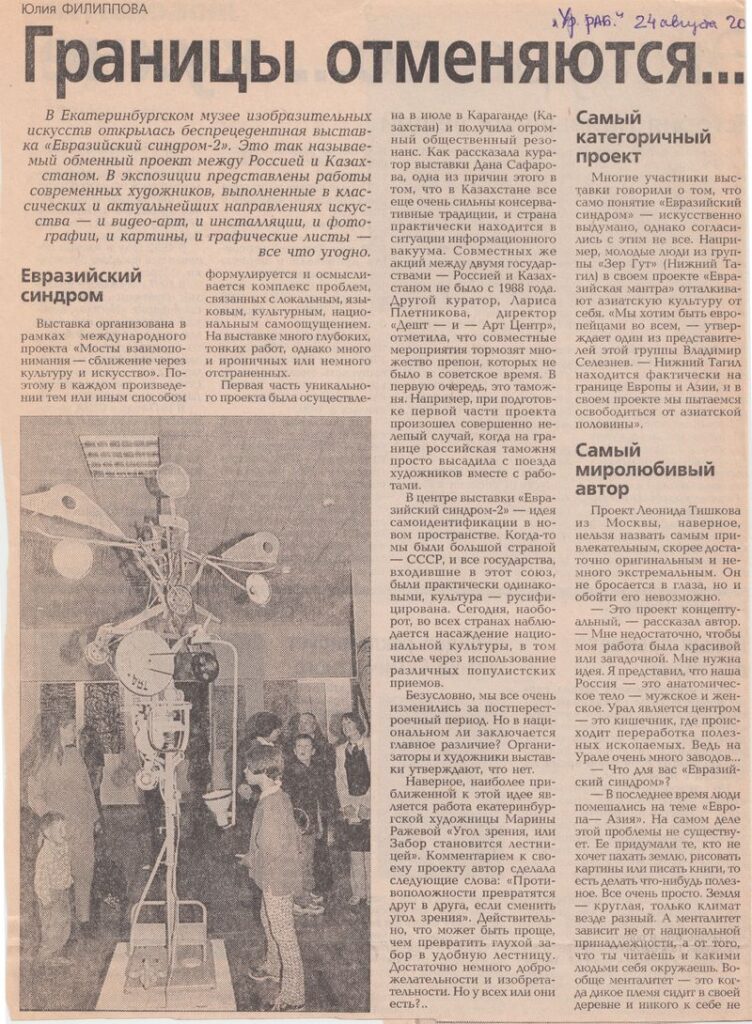

Critical response:
“The work by Yekaterinburg artist Marina Razheva titled ‘The Angle of View or Fence Becomes Stairs’ comes closest to the idea of transformative vision. Her comment on the piece was: ‘Opposites transform into each other if you shift your angle of view.’
Indeed, what could be simpler than turning a solid fence into a convenient staircase? All it takes is a little goodwill and inventiveness. But do we all have that?”
— Yulia Filippova, Ural Worker Newspaper, August 24, 2002
“Understand the space between breaths — there lies the whole world.”
— Jalaluddin Rumi

Art often strives to express what slips beyond ordinary perception and language. The Betweenness method is an artistic approach exploring the “in-between” — transitional, liminal states where “before” and “after,” “was” and “will be” merge into a singular point.
The Betweenness method focuses on experiencing and expressing intermediate states of being — those elusive moments that cannot be fully captured or understood by traditional means. These are spaces between sleep and wakefulness, thought and word, life and death.
Within these states, something essential and profound occurs — essence and revelation that slip away the moment we try to grasp them. Transitions are accompanied by amnesia — forgetting that impedes access to “between worlds” experiences.
Core Principles of the Method
Immersion into the “between” state — creating artistic spaces or situations where conventional boundaries of time and perception dissolve.
Expressing the inexpressible — using sound, light, space, performance, and media to convey subtle, ephemeral experiences.
Provoking empathy — encouraging the viewer to undergo the “in-between worlds” experience, potentially evoking memory or profound sensations.
Working with memory and amnesia — acknowledging that liminal states come with forgetting, and art’s task is to bring viewers closer to these experiences.
Exploring time and space — engaging with relations of “before” and “after,” “life” and “death,” “sleep” and “wakefulness,” where these opposites merge.
The Betweenness method offers a unique way to explore the depths of human experience connected to transitions and liminal states.
It is an invitation to touch the ineffable moments where the entire world resides — in the silent spaces between breaths.
“The real must be fictionalized in order to be thought.” Jacques Rancière

Revealed Realism (RR) is a unique method of perception and artistic action aimed at uncovering hidden layers of meaning within real objects, landscapes, and structures. It is based on the belief that even the most ordinary or forgotten fragments of the world contain a sense of “unfinishedness.”
This approach does not turn to fiction or external effects; instead, it relies on attentive observation and minimal intervention to reveal what already exists but is not immediately visible.
At its core, the method works with a sense of “unfinishedness” or absence — fragments of a hologram hinting at a larger, intangible whole. The artist and researcher collect these fragments, revealing and complementing them through minimal, respectful interventions that activate the object’s inner resonance without altering its essence.
Key Aspects of Revealed Realism: Immersive and patient attention to the object or environment: perceiving beyond the obvious.
Supplemented intervention: subtle artistic actions — such as temporary installations, sound additions, performative gestures, or poetic texts — that reveal hidden dimensions.
Phenomenological approach: emphasizes bodily and sensory engagement, recognizing multiple layers of reality including emotional and historical aspects.
Interdisciplinary inspiration: draws on phenomenology, speculative realism, archaeology of everyday life, tactile aesthetics, and evidentiary art.
Revealed Realism is more than an artistic technique; it is a way of being with the world. By revealing the invisible within the visible, it expands our understanding of reality, offering a richer, more nuanced experience that bridges art, philosophy, and lived experience — inviting a deeper connection to the world around us.
Design of Remembrance is an original artistic method focused on the meaningful and tangible preservation of personal experiences. It brings together the emotional traces of journeys and events with visual and tactile forms such as travel journals, postcards, sketches, collages, and object compositions.


The method is rooted in the natural human impulse to keep memories through small “artifacts” — notes, tickets, wrappers, photos, sketches, receipts. These items are often stored chaotically or lose their meaning over time. The goal of the Design of Remembrance is to transform this visual and emotional clutter into a coherent story.
The method includes:

This method is not only about preserving the past — it also fosters mindfulness in the present, helps to recognize the meaningful in the everyday, and develops the ability to tell personal stories through images.
It can be used in artistic practice, travel, art therapy, education, and personal creative projects.
We have conducted a workshop dedicated to the practical application of this method, guiding participants through the techniques of Design of Remembrance to create their own meaningful travel stories and handcrafted keepsakes.
R² is a collaboration between a researcher and an artist. We have been traveling together for 36 years — through both the physical and virtual worlds.

Along the way, we seek what slips through the cracks of simplified reality — what escapes direct sight but lingers in textures, shadows, the trembling of air, the persistence of echoes. We are drawn to traces of absence, moments of incompleteness, and quiet suggestion.
When observing natural or human-made environments — landscapes, buildings, structures — we often sense a kind of unfinishedness. These places feel like scattered fragments of a hologram, inviting us to complete the visible with a ghostly, multidimensional presence. Not through imagination alone, but through deep attention.
Sometimes this leads to artistic actions, temporary installations, or the uncovering of a message — a riddle embedded in the object itself.
We call this approach Revealed Realism — a practice in which reality is not replaced, but extended.
This is not mystification.
This is a method of attentiveness.
Projects: The Quarry as Witness, Deer Stones, Miniks, Enigma Travel Detective, To understand — one must walk Shoot for Color
Methods: Revealed Realism, Betweenness, Design of Remembrance
CV: Marina Razheva & Dmitry Razhev
Selected Publications: Cappadocia: A Very Curious Place (2008)
Dmitry Razhev
Born in 1968, Urals, USSR. Based at Lake Balaton, Hungary
Education
Urals State University, Russia
Degree in Biology, 1992
Academic Qualification
Ph.D. in History, awarded in 2002
Professional Experience
Researcher, Institute of History and Archaeology, Ural Branch of the Russian Academy of Sciences
1995–2009
Researcher, Federal Research Center “Tyumen Scientific Center,” Siberian Branch of the Russian Academy of Sciences (Tyumen)
2009–2023
Research Experience
Participant and leader of more than 50 archaeological and anthropological expeditions, including:
Research Interests
Author of more than 80 scientific publications, including:
Languages
Marina Razheva
Conceptual, multifunctional and interdisciplinary artist
Born in 1969, Urals, USSR. Based at Lake Balaton, Hungary
I work with time, memory, transformation, and myth. I explore the “in-between” state, using a wide range of materials, from ephemeral objects to found spaces. My artistic language includes performance, objects, photography, painting, and open-air installations. I believe each idea calls for its own form, so I employ diverse media and techniques, always seeking to reveal new layers of meaning.
Education:
2023-25 Experimental Textiles and Tufting Training (Hungary)
2001 Ural State Academy of Architecture and Arts. Faculty of Advanced Studies. Advertising Design
1992 Ural State University, Faculty of Biology (Russia)
1979-1983 Krasnoturinsk Art School (Russia)
Solo Projects:
– 37 solo projects from 1998 to 2025, including:
Selected Group Exhibitions and Biennials:
– Over 100 collective exhibitions since 1998 in Hungary, Italy, Israel, Greece, Australia, UK, and more, including:
Collections:
State Russian Museum, St. Petersburg, Russia
Museum of Fine Arts, Yekaterinburg, Russia
Surber’s Museum für Musikautomaten und Phonographen, Keszthely, Hungary
Cultural NGO ANSPI NEOT, Ferentino, Italy
Underground Art Museum, Yekaterinburg, Russia
Residencies & Memberships:
– PRO SYMPOSION (Hungary), member since 2024
– Residencies in Italy (ANSPI NEOT), Hungary (Rácalmás, Kötcse, Káptalanfüred)
Awards:
– 2003 Matthias Alexander Castrén Prize (Finland)
– 2019, 2020 – Top 100 photographers in Hungary by 35AWARDS
Teaching:
– Sketching Courses and Workshop “Design of Remembrance”, Keszthely, Hungary (2017)
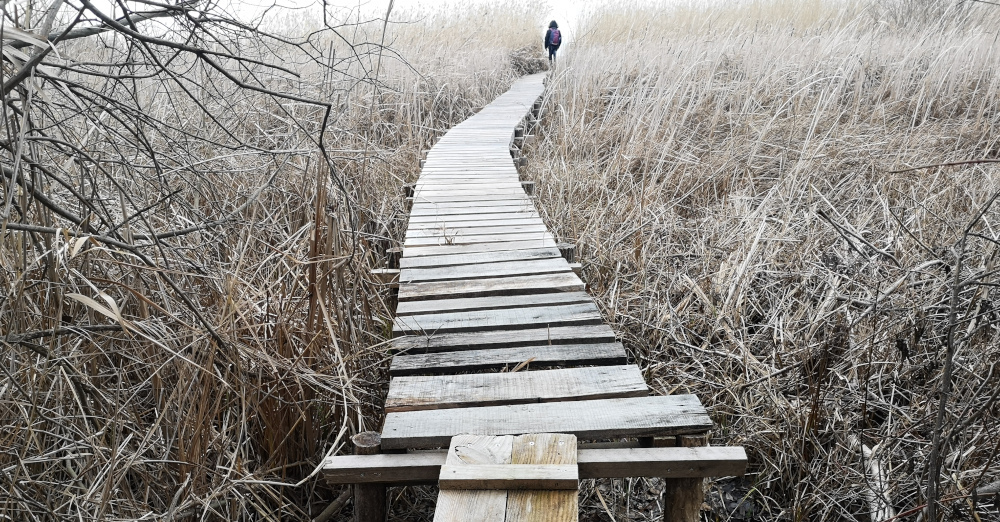
During travel, there are moments when traditional descriptions fail to convey the full complexity and strangeness of a place. Emerging paradoxes and inconsistencies create a sense of inner dissonance, prompting a search for ways to harmonize one’s perception of the environment.
By turning to historical sources and engaging with metacultural models, we can construct a hypothetical image that complements and clarifies the mysterious aspects of the observed reality. This approach allows for a deeper understanding of a place and helps restore internal coherence in our perception.